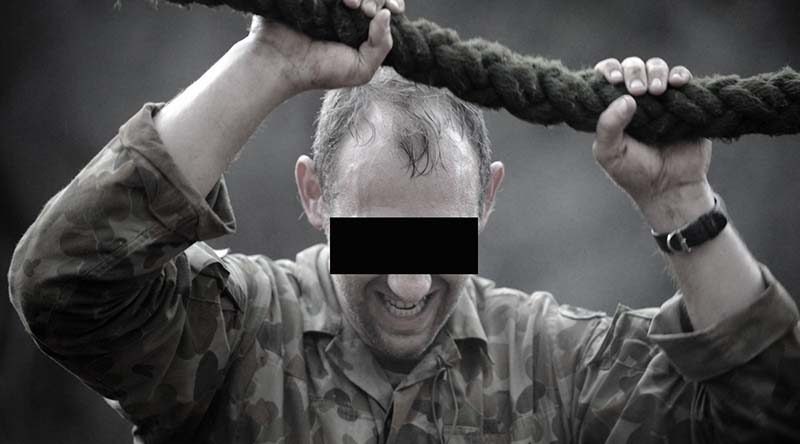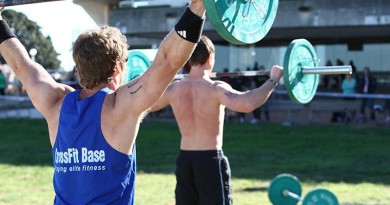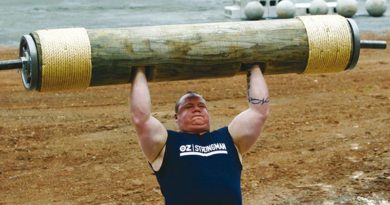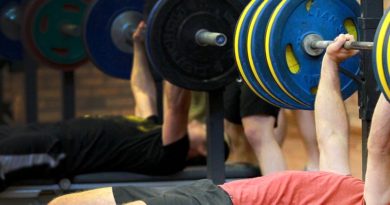Military Fitness – Part 26


This issue we’re going to look at some specific workouts designed to bridge the gap between conventional workouts and the unique demands of high-level military training and operations.
When it comes to designing fitness programs one of the most important considerations is to design a program that develops all of the different aspects of fitness required for the sport or job in question.
What many people fail to realise about military fitness plans is that there are a number of fitness attributes that are critically important to military preparedness which are often unnecessary for civilian fitness or sport and which are therefore overlooked.
In the civilian world, there is no need to train specifically to tolerate grinding boredom, nor is there a need to develop the mental and physical fortitude to continue working at relatively high intensities at the end of a multi-hour session.
In military applications, however, the ability to tolerate boredom, fatigue and stress while still performing at a high level, are often critical to mission success and, like any skill, these attributes can and must be trained.
A classic example of this requirement is selection into any of the world’s elite special-forces units. Whether it is the Australian SAS, US Army SF, or any of the many police tactical and counter-terror teams, the recurring theme in selection is a prolonged period of monotonous, arduous exercise designed to grind candidates down so that their true character and level of dedication is exposed.
To train for these situations, three, 20-minute sessions a week of jazzer-boxercise-yoga just isn’t going to cut it!
Enter the extreme workout. These are workouts designed to test and build mental and physical stamina.
Over the past few years, I’ve performed many of these workouts and used them extensively with special-forces candidates to hone their preparation to a fine edge before they head off to selection. Not every workout here is extremely long, however all of them ARE extremely hard.
WARNING – These workouts are not for beginners. Before attempting any of these sessions you should have at least a full year of training, which includes basic heavy weight training and a solid endurance program. Even then these sessions carry a risk of injury because of their high volume and intensity. Do not attempt these sessions unless you are at the required level. In any case, however, be warned that neither CONTACT nor Don Stevenson accept any liability for injury if you do attempt these, whether you are adequately fir or not.
Remember these workouts are purposely hard, long and sometimes monotonous. The challenge in most cases is to complete the workout without quitting! You should perform no more than ONE of these workouts a week mixed in with your regular program.
The 1000-rep challenge
This is now a classic kettlebell extreme session. The rules are simple. Pick up a 16kg kettlebell and perform a snatch from between the knees to overhead. Repeat 999 more times without letting the kettlebell touch the ground. You can switch arms as often as you want and can ‘rest’ with the kettlebell locked out overhead, but that’s it.
Max reps deadlift in 30 minutes
Load up the bar with at least bodyweight and perform as many reps of deadlift in 30 minutes as you can. I did this once for a friendly comp and the weight was set at 143kg (315 pounds). By the 30-minute and 90-rep mark I was toast.
Row a marathon
Get on a Concept 2 rower – pretty much every gym has them. Row 42km without getting up.
The Inman mile
It’s only 1.6km, but it’s 1.6km carrying 150% of your bodyweight on your shoulders on a barbell. I suggest starting with the less weighty but equally nasty sandbag mile with 100% of bodyweight. Just imagine it’s a fireman’s carry of a wounded buddy to the extraction point.
Training day
This is a type of session I use exclusively with SF candidates in the eight weeks before their selection course. This session mimics the type of activities and timeframes that are found on courses such as the SAS and US SF selection courses.
Training day is performed in long pants and boots and requires pack, webbing, personal weapon (or a substitute) and some basic kit such as a sandbag, small truck tyre, kettlebells and a log.
Training day kicks off with the warmup – three rounds of run 800m, 30 pushups, 40 situps and 50 unweighted squats.
Then it’s on to a full hour of log, sandbag and kettlebell training wearing webbing.
Sessions such as the following are common.
Max rounds in 1 hour of 10 chinups, 50m leopard crawl, 200m sandbag carry, 10 log clean-and-press, 200m log carry, 20 pushups, 200m tyre drag, 30 kettlebell swings, run 400m.
Then it’s on to the main event. Pack march over mixed terrain with full pack, webbing and rifle. Distances and loads start with 15km and 28kg and climb to 30+km and 50kg packs by the final weeks.
Oh yeah, and just to be cruel, I’ll sometimes throw in the requirement to carry an additional awkward load such as a tyre, kettlebell or water jerry.
After the pack march comes another 30-40 minute workout similar to the first, this time without webbing.
All up a ‘Training Day’ can run for up to 7 hours, however the feedback I get is that repeated exposure to these sessions is excellent preparation for the demands of a three-week selection course.
So the only question now is – are you tough enough?
Well, are you?
Further warning – these workouts SHOULD NOT be attempted until you are properly ready for them. Don Stevenson and CONTACT accept no liability – period.
.
.

.
.






